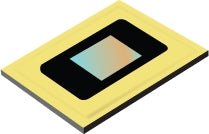TIR prisms and DMD chip sizes exhibit a functional compatibility relationship, but they are not strictly one-to-one matched. The key points are as follows:
I. Core Compatibility Factors
Optical Coverage Matching
The TIR prism must ensure that the illumination beam fully covers the active area of the DMD chip (e.g., 0.23″, 0.33″, 0.47″ models). An undersized prism causes light loss, while an oversized one introduces stray light interference.
Angle-Micro Mirror Coordination
The tilt angle of the DMD micromirrors (e.g., 12° or 10°) must align with the incident beam angle controlled by the TIR prism. This ensures optimal light efficiency and avoids dark-state anomalies.
II. Non-Correlated Aspects
Resolution Independence
DMD resolution (e.g., 4K) depends on micromirror density, not the prism size. The TIR prism primarily affects light transmission efficiency, not pixel density.
System Integration Flexibility
A single DMD size may adapt to multiple TIR prism designs (e.g., RTIR single prism vs. composite prisms), depending on the optical system layout (relay lenses, light homogenizers, etc.).
III. Practical Selection Criteria
Compact Projectors: Smaller DMDs (e.g., 0.23″) pair with TIR prisms optimized for miniaturized optical paths.
High-Brightness Systems: Larger DMDs (e.g., 0.47″) require prisms with enhanced coating techniques to maximize light throughput.
In summary, TIR prism-DMD compatibility involves balancing optical design, manufacturing costs, and application requirements, rather than relying solely on dimensional parameters.
This translation preserves the technical accuracy and structure of the original Chinese response.


Share:
Summary of TIR Prism Applications
How RFID Modules Power Our Connected World?